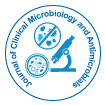

Commentary - (2024)Volume 8, Issue 3
Amebiasis, caused by the protozoan parasite Entamoeba histolytica, is a major health concern in many parts of the world, particularly in developing countries with poor sanitation and limited access to clean water. The infection can cause a wide range of symptoms, from mild diarrhea to life-threatening complications like liver abscesses. As a leading cause of morbidity and mortality in areas where it is endemic, the prevention of amebiasis is important for reducing its global burden. While treatment with antimicrobial agents such as metronidazole is effective, prevention remains the most effective approach to control the spread of the infection. This article discusses three primary methods of prevention vaccines, hygiene and public health policies.
Challenges in vaccine development
Currently, there is no universally approved vaccine for Entamoeba histolytica infections, although research in this area is ongoing. The development of a vaccine against amebiasis is a priority, given the high burden of the disease in endemic regions and the limited options available for prevention. Several candidates are in various stages of research and clinical trials. One of the main challenges in vaccine development for amebiasis is the complexity of the E. histolytica life cycle. The parasite has two forms: the cyst and the trophozoite. The cyst form is highly resistant to environmental stress and is responsible for transmission, while the trophozoite form is the invasive stage that causes disease. A vaccine must effectively target both stages of the parasite to prevent infection. Moreover, E. histolytica has the ability to evade the immune system through mechanisms such as antigenic variation, making the development of a long-lasting immune response challenging. Understanding the molecular biology of the parasite and the host-parasite interactions is important for identifying potential vaccine candidates. Several vaccine candidates are being investigated, including subunit vaccines targeting specific E. histolytica antigens, such as the Gal/GalNAc lectin, which plays an important role in the parasite’s ability to adhere to host cells. Additionally, DNA vaccines and recombinant protein vaccines are being tested in pre-clinical and clinical trials. While none have reached widespread use, ongoing research provides optimism for an effective vaccine in the future.
Role of amebiasis health policies
Public health policies play a vital role in controlling the spread of amebiasis. Effective interventions require a combination of education, surveillance and infrastructure improvements. Raising awareness about amebiasis and its transmission routes is essential in reducing the burden of the disease. Public health campaigns that emphasize the importance of hygiene, safe water consumption and food safety can help communities take proactive measures to prevent infection. Educating the population about the symptoms of amebiasis and the importance of seeking treatment when symptoms arise can also lead to earlier diagnosis and reduced morbidity. Monitoring the prevalence of amebiasis and tracking outbreaks can help authorities implement timely interventions. Public health surveillance systems that track the incidence of amebiasis in both rural and urban areas can provide valuable data for targeted prevention and treatment efforts. In endemic areas, clinicians should be trained to recognize the signs and symptoms of amebiasis, such as persistent diarrhea, abdominal pain and liver abscesses, in order to diagnose and treat the infection early. Early detection can reduce the spread of the parasite and prevent severe complications. Access to healthcare is an important component of any public health strategy aimed at controlling amebiasis. In many low-income regions, healthcare infrastructure is inadequate and many individuals lack access to diagnostic services and effective treatment. Strengthening health systems, improving diagnostic capabilities and ensuring access to affordable medications like metronidazole or tinidazole can significantly reduce the impact of amebiasis.
Treatment of amebiasis
Despite the progress made in understanding amebiasis and its prevention, significant challenges remain. One of the major hurdles is the lack of effective vaccines and the ongoing need for novel treatments to address emerging drug resistance. Additionally, the socio-economic factors that contribute to the spread of amebiasis, such as poverty, lack of sanitation and limited access to healthcare, must be addressed through comprehensive public health policies. In the future, a multifaceted approach that combines vaccine development, improved hygiene practices and strong public health policies will be essential in reducing the burden of amebiasis. Greater investment in research and infrastructure, along with increased public awareness, will be key to achieving these goals. The prevention of amebiasis remains a major global health challenge, particularly in regions where the disease is endemic. While vaccines hold potential, hygiene practices and public health policies are currently the most effective means of reducing transmission. Improving access to clean water, promoting hygiene education and strengthening healthcare systems are important steps in combating this disease. A combination of preventive strategies, backed by ongoing research and international collaboration, will be essential to controlling the spread of Entamoeba histolytica and improving the health of vulnerable populations worldwide.
Citation: Mark V (2024) Prevention of Amebiasis: Vaccines, Hygiene and Public Health Policies. J Clin Microbiol Antimicrob. 8: 204.
Received: 26-Aug-2024, Manuscript No. JCMA-24-35606; Editor assigned: 28-Aug-2024, Pre QC No. JCMA-24-35606 (PQ); Reviewed: 11-Sep-2024, QC No. JCMA-24-35606; Revised: 18-Sep-2024, Manuscript No. JCMA-24-35606 (R); Published: 27-Sep-2024 , DOI: 10.35248/ JCMA. 24.8.204
Copyright: © 2024 Mark V. This is an open-access article distributed under the terms of the Creative Commons Attribution License, which permits unrestricted use, distribution, and reproduction in any medium, provided the original author and source are credited.